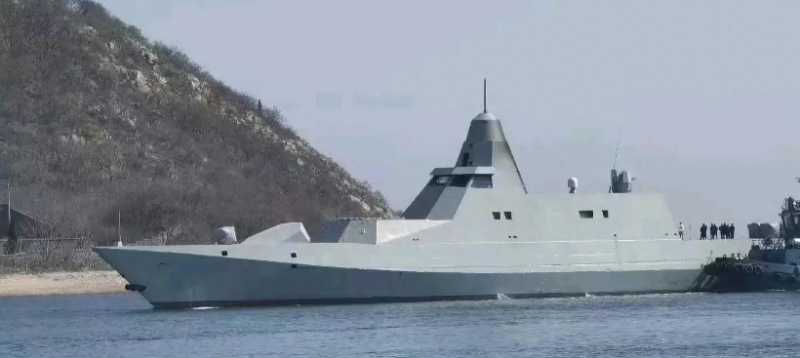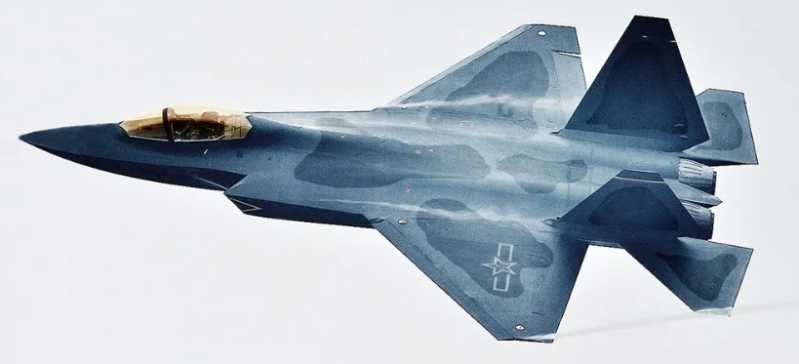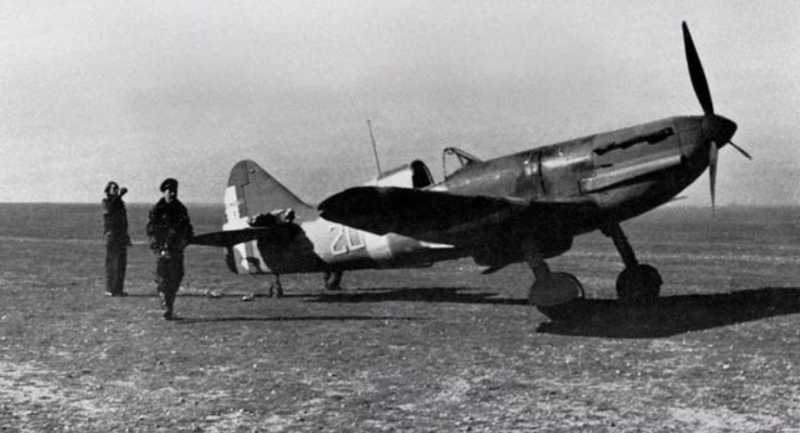As we all know, India’s weapons and equipment have always been achieved by buying, buying and buying. India is a key market for major weapons and equipment producing countries, and the same is true for firearms. In recent years, there have been constant reports that India has purchased rifles from abroad, both Soviet and American, with calibers ranging between the traditional 7.62 mm and 5.56 mm. But on August 9, 2020, Indian Defense Minister Rajnath Singh released a piece of news that set off the media: the Indian Ministry of Defense plans to impose an import embargo on 101 types of weapons and equipment to promote the localization of defense production. The plan will be implemented gradually from 2020 to 2024. After the embargo, India’s domestic military industrial units will have an additional $53.35 billion in military product orders.
In fact, India has been exploring ways to achieve independent firearms security, and new firearms are often publicly unveiled. However, gun manufacturing is an important symbol of a country’s basic industrial capacity, involving basic materials, design level, process level and inspection and acceptance capabilities, and it is not something that can be produced by patting one’s head.
India’s demand for guns
India’s demand for guns is huge, mainly from three aspects: the army, paramilitary forces and law enforcement agencies at all levels. India currently has nearly 1.4 million troops, including about 1 million in the army. The paramilitary force has a strength of about 1 million. In recent years, it has been actively expanding its military and preparing for war. India also has a special Indo-Tibetan Border Police Force, and the number of law enforcement personnel in various places is even larger. According to statistics, India now has a shortage of 800,000 rifles, and a shortage of more than 300,000 pistols and submachine guns. In addition, India is a country that allows the possession of guns. 5 out of every 100 people can obtain a license to own a gun, and the number of civilian guns in India is more than 40 million. With such a huge demand, India’s firearms manufacturing industry should be prosperous, but India’s poor production capacity of firearms is far from meeting its domestic demand, and the quality is worrying. Therefore, buying has become an inevitable choice for India.
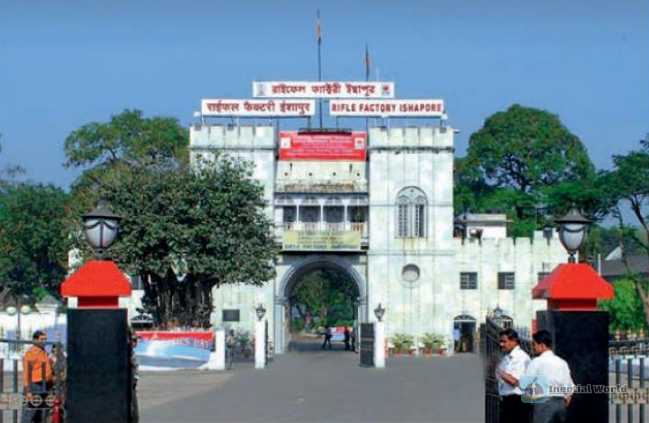
Indian Gun Manufacturing Factory
To understand the situation of firearms manufacturing in India, you must first understand the firearms factories in India. There are three main manufacturers of firearms in India, namely the Ishapur Rifle Factory in West Bengal, the Light Weapons Factory in Kanpur, and the Tiruchirapalli Ordnance Factory in Tamil Nadu. The three factories are among the 41 ordnance factories under the Indian Ordnance Factory Committee and are state-owned enterprises in India. In addition, there are two newly established companies, Indo-Russian Rifle Private Limited and SSS Defense Company.
Although the level of gun manufacturing in India is not high now, the history of gun manufacturing is enough for Indians to brag and be proud of. As early as 1801, India established a gun factory and began to manufacture guns and cannons. Of course, this gun factory had nothing to do with the Indians, but was established by British colonists. Among the existing gun factories, the earliest one was the Ishapore Rifle Factory, which was established by the British in 1904. At that time, it mainly produced Lee Enfield single-shot non-automatic rifles to meet the needs of the British colonial armed forces, and completed the production task of about 25,000 rifles per year. For a long time afterwards, the main product of the factory has always been Lee Enfield rifles, which lasted until the mid-1980s. In addition to producing rifles, during the First and Second World Wars, the Ishapore Rifle Factory also undertook the maintenance of Maxim machine guns, Vickers machine guns and other firearms. After India’s independence, the Ishapore Rifle Factory was nationalized by India. Since the 1950s, the production scope of the Ishapore Rifle Factory has gradually expanded, and it has begun to manufacture No. 12 DBBL/SBBL shotguns, sports rifles, etc. Now, the business has expanded to bayonets, revolvers, pistols, submachine guns, rocket launchers and other products.

The Small Arms Factory was founded in 1942 as part of the "transplantation plan" at the time. It was built in the style of the Ishapore Rifle Factory. As a backup of the Ishapore Rifle Factory, the factory mainly ensured the supply of firearms in eastern India. It initially produced 7.7mm Bren machine guns. At the end of World War II, the factory also undertook the task of repairing aircraft engines for the British Royal Air Force. After 1949, it was officially renamed the Small Arms Factory. In 1964, it began to produce 7.62mm light machine guns, and later produced 9mm submachine guns, revolvers, and 51mm mortars.
1966 In July 2010, the then Indian Prime Minister Indira Gandhi presided over the establishment of the Tiruchirapalli Ordnance Factory, mainly to make up for the insufficient production capacity of the two factories, the Ishapore Rifle Factory and the Light Weapons Manufacturing Factory. In 1967, the production of 9mm submachine guns began, and by the mid-1970s, the production of 7.62mm caliber rifles began. At present, in addition to rifles, it mainly produces large-caliber machine guns and grenade launchers.
In order to manufacture 750,000 AK203 rifles, the Indian Ordnance Factory Board and the Russian Kalashnikov Company jointly established the Indo-Russian Rifle Private Limited. In March 2019, Indian Prime Minister Modi personally unveiled the company. The company is located in Korva Amethi District, Uttar Pradesh, India. Among them, the Indian Ordnance Factory Board holds a 50.5% stake, the Kalashnikov Company holds a 42% stake, and the remaining 7.5% of the shares are held by Russia’s Defense Products Export Corporation.
In 2016, SSS The company was founded by SSS Defense, which is a subsidiary of India’s largest spring manufacturer and the first company outside the Indian Ordnance Factory Board to produce guns (of course, there are still many underground gun factories in India, and there are many types of guns without any quality assurance). Its main target is the Asian market outside of India. It is said that the company’s equipment can complete the production capacity of 80,000 guns, and its products are in full bloom. It can develop a variety of firearms, including high-precision sniper rifles that fire 7.62x51mm, 8.6mm and other caliber bullets, as well as rifles that fire 7.62x39mm bullets, etc., which are frequently shown at various exhibitions. In addition, SSS Defense also produces high-performance scopes, and has established a joint venture with an ammunition factory in Andhra Pradesh. It has cooperated with Brazil’s CBC, the world’s second largest ammunition producer, and plans to produce 7.62mm, 8.6mm, 9mm, and 12.7mm caliber ammunition. Although SSS The defense company was established not long ago, but it has a high starting point and is regarded as the hope of Indian firearms manufacturing.
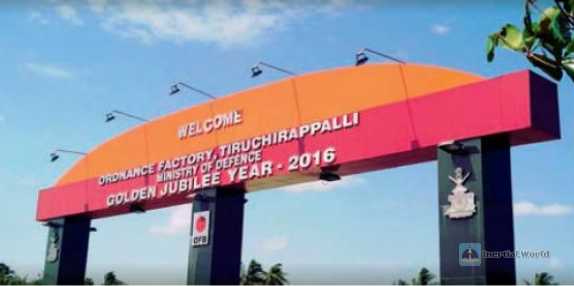
Only one type of pistol
According to information from various Indian manufacturers, there is only one type of automatic pistol produced in India, which is a copy of the Browning 9mm GP35 pistol, named 1A 9mm fully automatic pistol. The original GP35 pistol was designed by the famous firearms designer Browning. It was first designed by the Belgian FN company at the request of the French Army. It is also called the M1935 pistol, which fires 9x19mm Parabellum pistol bullets. Since the mainstream calibers of pistols at that time were 7.63mm and 6.35mm, there were relatively few 9mm caliber pistols, so it was also called a high-powered pistol.
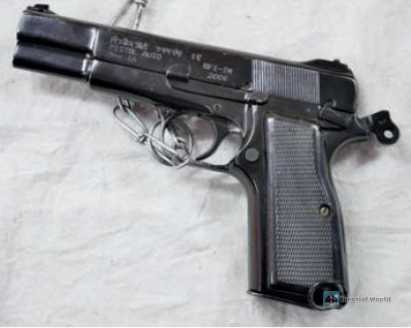
GP35 pistol adopts the barrel short recoil working principle, barrel offset locking mechanism, hammer rotary firing method, and is equipped with an empty chamber stop mechanism. It has a simple structure, reliable and durable. There are many countries and manufacturers that imitate and produce GP35 pistols, but they are slightly different from the original guns. India’s 1A pistol is actually a copy of the MK1 product of Canada’s Inglis Company, and the original factory drawings are introduced in a licensed production model. Compared with the original gun, Canada’s MK1 9mm pistol changes the original gun’s horizontally adjustable rear sight into a fixed rear sight, and also changes the adjustable rear sight into an adjustable front sight when calibrating the gun. India’s 1A type uses matte black surface treatment technology, and the grip guard has become black plastic. In terms of performance, India’s 1A pistol weighs 0.935 kg, is 205 mm long, has a barrel length of 120 mm, and has a capacity of 13 rounds. It is equipped with India’s own MK2z 9mm Parabellum pistol bullet, with an initial velocity of 396 m/s, higher than the original gun’s initial velocity of 335 m/s. In addition to its own 1A 9mm pistol, India has imported a large number of automatic pistols to meet the military’s equipment needs. The main models include Glock pistols, Beretta 92 pistols, SIG Sauer P226 pistols, etc., all with a caliber of 9 mm, and ammunition can also be used with India’s own production of bullets.
Although India’s military pistol supply is relatively tight, various firearms manufacturers are still producing civilian pistols, including various models of revolvers and small self-defense pistols, among which the 0.32-inch Asani pistol is a more popular one on the market. The gun actually combines the structural features of the Browning M1910 pistol and the Colt 1903 pistol, and adds many Indian elements to the appearance. The magazine has a capacity of 8 rounds. There are two models with a total length of 158 mm and 163 mm, namely Asani MK1 and Asani MkI, which are priced at about 85,000 rubles.

Submachine guns are too tangled
India has always been tangled in the naming of submachine guns. There are both submachine guns and carbines in the name, and the English name is "sub machine gun carbine". We know that submachine guns generally refer to continuous-fire weapons that fire pistol bullets, while carbines are actually shortened rifles. Due to the entanglement of the name, India also has a tangled understanding of the use of submachine guns. In the early days, India’s submachine guns were directly copied, and the contradiction was not obvious. Later, as India began to independently develop submachine guns, the problem gradually emerged.
Before 2000, the Indian Army was equipped with the British Sten submachine gun copied in the 1950s, which was mainly produced by light weapons manufacturers. The British Sten submachine gun appeared during World War II. Its biggest feature is its simple structure and easy processing and manufacturing. It is mainly composed of a barrel, a receiver, a bolt, a buttstock and a magazine, and adopts a free-bolt automatic principle. Due to the large number of stamping parts and welded parts, it is said that the manufacturing cost is only 9 pounds, which effectively supported the war consumption of Britain during World War II. There are two types of Sten submachine guns copied by India. The 1A type is a copy of the British Sten L2A1 9mm submachine gun launched in 1953, and the 2A1 type is a copy of the Sten MarkV submachine gun. In India, they are called "sub machine gun carbines". We will just call them "submachine carbines". The Indian 1A and 2A1 9mm submachine carbines are still in service. Since the Sten submachine gun was born to be cheap, it has many names such as "tube gun" and "stinky gun", which means that its performance is not good.
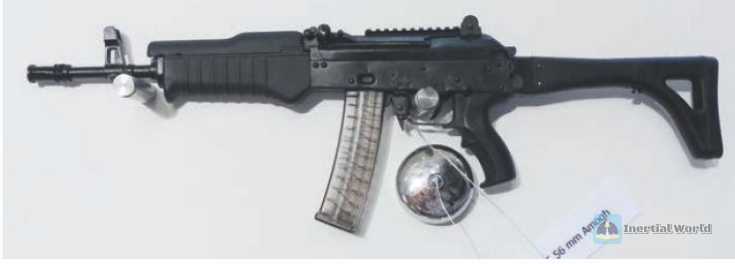
Although the biggest feature of the Sten submachine gun is that it is easy to manufacture, it seems that it has not met the needs of the Indian military. India has also purchased a large number of submachine guns from abroad, mainly including: Israel’s 9mm Uzi submachine gun and Germany’s 9mm MP5 submachine gun, which are equipped with special forces and anti-terrorist special police; Switzerland’s 9mm MP9 Bruja Tome submachine gun, used by the Ghatak platoon and the police in Mumbai and other places. Later, Israeli 9mm Tavor X95 submachine guns were also purchased.
By the mid-2000s, India began to look for a modern submachine gun to replace the Sten they inherited from the UK. Two submachine guns were mainly developed, one was the Amohan Carbine (AMOGH) developed by the Ordnance Factory Board (OFB), and the other was the Joint Venture Protection Carbine (IVPC) developed by the Arms Research and Development Establishment (ARDE) also called the Modern Submachine Carbine (MSMC). Later, the Amohan Carbine failed to be developed. By 2011, the Modern Submachine Carbine was selected as a replacement for the Sten submachine gun.
Both the Amohan carbine and the modern submachine carbine use automatic mechanisms, bolt-rotating locking mechanisms and bolt frames similar to those of the AK rifle. This is probably why India can call both submachine guns carbines. Both submachine guns are equipped with 5.56x30 mm bullets developed by India itself, which are shorter than the NATO 5.56x45 mm bullet shells, and have an initial velocity of 650 m/s, which is much higher than the initial velocity of 480 m/s of my country’s 5.8 mm pistol bullets. It is a proper miniature rifle bullet.
The Amohan carbine looks very similar to the modern version of the AK rifle, and weighs 2.95 kg, which is also close to a rifle.
The 5.56 mm MSMC modern submachine carbine has many modern elements in its appearance and looks more like a submachine gun. The successful development of this "carbine" has greatly boosted the morale of the Indian firearms industry. According to Indian propaganda, the modern submachine carbine adopts a unique caliber and has strong close combat capabilities; it has low recoil and can keep the gun body stable when shooting; it adopts a bullpup structure design, and the magazine is located in the grip, which can be fired quickly with one hand; the telescopic buttstock is convenient for use in small spaces. Initially, in India, the competitor of the 5.56mm modern submachine carbine was the Israeli TAR-21 rifle, which was equipped in large quantities by Indian special forces. With the deepening of the research and development work, the current comparison target has changed from the Israeli TAR-21 rifle to the Belgian FN P90 submachine gun and the German HK MP7 submachine gun. When the MSMC modern submachine carbine was tested by the army, due to inconsistent understanding of the needs, the test work was tortuous. In August 2011, the Indian army began to officially equip the gun and it has now been mass-produced.
Rifle "Borrowing the Strengths of Many"
Rifles are the basic weapons and equipment of infantry, and the number of equipment is relatively large, so it is also an important factor in testing a country’s firearms production capacity. It is "difficult" to say exactly how many types of rifles India has, because most of the world’s rifles have been purchased and equipped by India, but the number of rifles produced by India itself is much smaller.
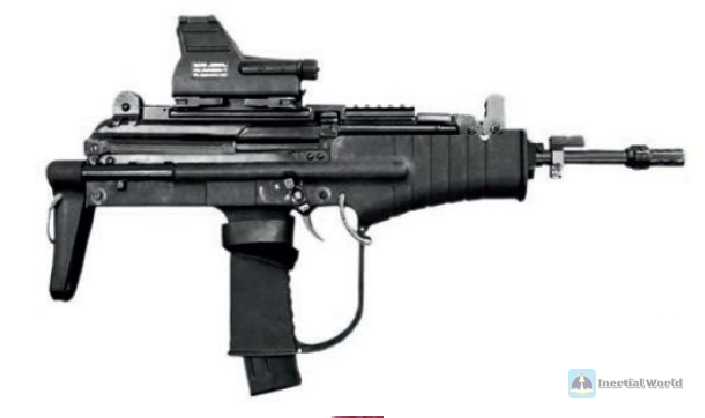
India mainly produced and equipped Lee Enfield rifles in the early days, which are also known as the British fast rifles during World War II. After the 1950s, India began to imitate the British L1A1 semi-automatic rifle and named it the Ishapol 1A1 rifle. Although the rifle was later replaced by the INSAS rifle, it is still the main rifle in India. It was originally produced by the Tiruchirapalli Ordnance Factory, and later several other arsenals began to produce it. The L1A1 semi-automatic rifle is actually a licensed product produced by the British based on the FN FAL 7.62 mm automatic rifle introduced from Belgium, which was converted by the Lee Enfield factory into a semi-automatic rifle. The difference between India’s 1A1 rifle and the British L1A1 semi-automatic rifle is that it still uses the old Lee Enfield single-shot rifle buttstock, so that it can accommodate accessories such as oil bottles and brushes. Later, India developed a variety of models based on the 1A1 rifle, among which the 1A is a fully automatic model, also known as the Ishabol 1A rifle, which is basically the same as the Belgian FAL. The 1C is also a fully automatic model, mainly designed for shooting in armored vehicles. By 2012, the 1A rifle still had an annual production of about 6,000 units, with a total production of more than 1 million units. The Ishabol 1A rifle can also be seen in every Indian military parade.
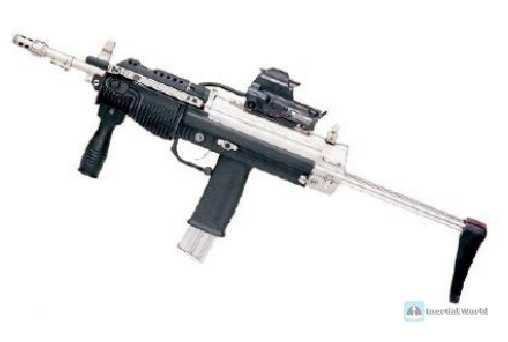
In the 1960s, India also copied the 2A and 2A1 rifles based on the 7.7mm SMLE MK I single-shot non-automatic rifle that had been eliminated by the United Kingdom (the two mainly differed in the sight). Compared with the original gun, it replaced the square magazine and used the same stock as the 1A1 rifle. By the time it was discontinued in 1974, the production volume of the 2A and 2A1 rifles was more than 250,000, and they are still in service today.


After the 1980s, India copied many types of rifles based on the AKM rifle, but none of them were very successful. By the mid-1980s, India was determined to develop its own small-caliber gun family system, and the INSAS gun family program began, namely the Indian light weapons system program. The INSAS gun family was originally planned to be three types of guns, namely automatic rifles, carbines and light machine guns. In the end, due to repeated setbacks in the development of carbines, it had to be separated from the system and became the incongruous MSMC modern assault carbine.
INSAS gun family can be said to have gained "the best of all". The gas system and locking principle are based on the Israeli Galil rifle; the receiver is basically from the AK rifle, which is stamped with 1.8 mm thick metal plates, and the grip is similar to the AK rifle; the buttstock, gas regulator and muzzle flash suppressor are the same as the Belgian FN FAL rifle; the front handguard structure is taken from the American AR rifle; the layout and design of the bolt handle are the same as the G3 of the German HK company. The same as the series, located in the upper left front position of the handguard. In order to improve wear resistance, the barrel and firing pin are chrome-plated. All hand-held parts including the buttstock, handguard, etc. are made of plastic-based materials (earlier ones were made of wood), and the buttstock of the folding stock rifle is made of steel pipe. It is equipped with a 20-round magazine made of translucent plastic material, and its magazine slot can also adapt to standard M16 rifle magazines. There is also a magazine with a capacity of 30 rounds, which is mainly used for light machine guns. The INSAS rifle speed machine can choose single shot and 3-round burst, but there is no continuous shooting function. There is an optical sight interface on the right side of the receiver, and an optical sight can be installed. The mechanical sight uses the FN FAL’s sheet front sight and the FN FNC’s "L"-shaped sight, which is divided into 200 meters and 400 meters. Other functions including launching rifle grenades and blank cartridges are also available.

Along with the INSAS family of guns, 5.56x45 mm ordinary bullets and tracer bullets were also developed simultaneously, mainly based on the NATO SS109 bullet. The ordinary bullet weighs 12.85 grams and the bullet weighs 4.16 grams. The tracer bullet weighs 12.95 grams and the bullet weighs 4.43 grams. Because the Indian army emphasizes long-range killing ability, the bullet weight is heavier than NATO’s 5.56 mm bullet, and the long-range speed retention ability is stronger.
Although India’s INSAS family of guns is ambitious, the development and production progress is very slow. It was originally planned to equip the first batch of 7,000 rifles in 1994, but because the bullets were not finalized for a long time, the equipped firearms lacked ammunition and the Indian army could not use them. In 1997, the Indian Ministry of Defense had to order 50 million rounds from Israel. 5.56mm bullets. It was not until 1999 that 30,000 INSAS rifles were officially put into service. During this period, India could only order 100,000 7.62mm AKM rifles from Romania as an emergency to replace its old Ishapol rifles. After 2000, India planned to equip 528,000 INSAS rifles, but due to production progress issues, delivery was delayed. In addition, during use, the gun continued to expose problems such as easy damage or cracking of parts, poor reliability, and poor low-temperature resistance. After many improvements, it was still not solved, and the plan was constantly adjusted.

In order to solve the problem of rifle shortage, India has tested multiple types of rifles since 2011 and has also purchased some Tavor TAR-21 rifles from Israel. In 2019, India and Russia officially signed a production contract for 700,000 AK203 rifles, which means that India will fully replace the AK203 rifles in the future, and its rifle bullet standard will also change from 5.56 mm caliber to the older 7.62x39 mm caliber (the same as my country’s Type 56 bullet).
In addition, in India, you can see rifles from many countries, such as Austria’s AUG rifle, Belgium’s FN company’s SCAR rifle, Israel’s Galil rifle, TAR-21 rifle, and Russian AK series rifles, the United States’ M16 rifle, M4 carbine series, etc., and even the T91 rifle developed by Taiwan, China, has been purchased and equipped by India.
India’s sniper rifles, machine guns, and grenade launchers are also mainly purchased. India’s manufacturing is pitiful, and its creation is even more negligible.






